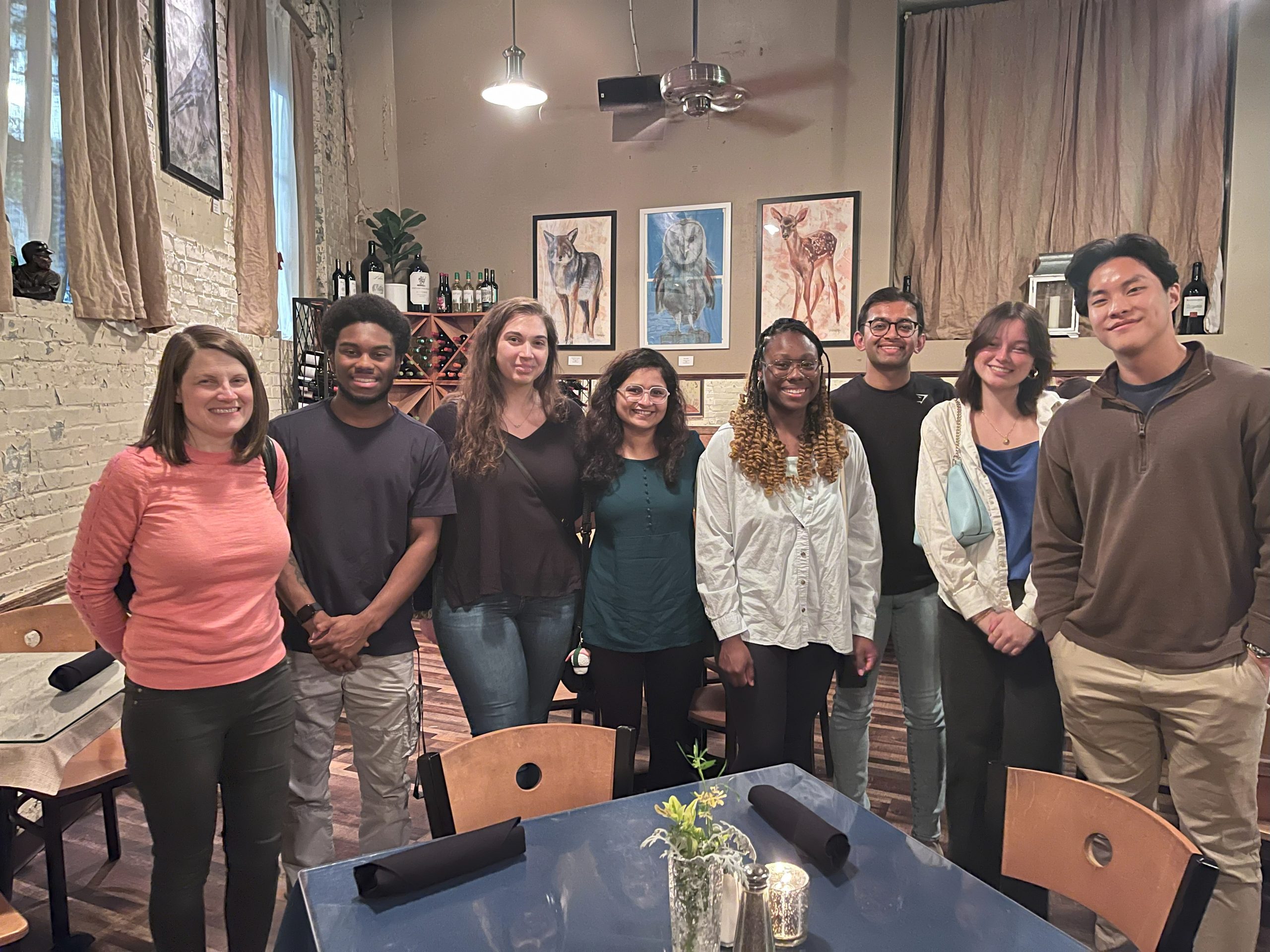Lab meeting with the Welshhans Lab
Posted by the Node, on 1 May 2024
This is part of the ‘Lab meeting’ series featuring developmental and stem cell biology labs around the world.
Where is the lab?
The Welshhans lab is located at the University of South Carolina, which is in Columbia, South Carolina, USA.
Research summary
The Welshhans Lab works on neural development. In particular, we are interested in the process by which neural connectivity is formed. This process is mediated by a highly dynamic sensory and motor structure located at the ends of developing axons, called the growth cone. Much of our work focuses on local translation, which is the process by which a subset of mRNAs is localized to and locally translated within growth cones to regulate axon guidance. We study how this molecular mechanism and others regulate typical development. Furthermore, we study how the dysregulation of various molecular mechanisms, including local translation and adhesion, contribute to the phenotypes of Down syndrome. We use mouse models and human-induced pluripotent stem cell-derived neurons and brain organoids to study these processes.

Can you give us a lab roll call?
- Katelyn, PhD Candidate: My project examines the local translation of b-actin and how it regulates axon guidance through adhesion-based mechanisms during nervous system development.
- Nikita Kirkise, PhD candidate: I am a 4th year PhD student in Kristy Welshhans’ lab. My project investigates the role of extracellular matrix proteins, specifically laminins, in regulating the local translation of mRNAs in growth cones of developing mouse cortical neurons.
- Jordan Headen, PhD candidate: I am a second-year PhD student investigating the role of adhesion and the local translation of candidate mRNAs during the development of the nervous system.
- We also have three undergraduates in the lab who are studying how adhesion and local translation are altered in Down syndrome. For their research, they are using human fibroblasts as a model.
Favourite technique, and why?
Kristy: My favorite technique is anything involving microscopy and living cells. I find it fascinating to watch living cells under high magnification. It doesn’t matter whether we are using brightfield, fluorescent translation reporters, or some other fluorescent tagging method, I can stare at these movies for hours and always find something interesting!
Apart from your own research, what are you most excited about in developmental and stem cell biology?
Kristy: I am most excited about some recent advances that are improving the quality of life for individuals with neurodevelopmental disorders (including non-pharmacological, pharmacological, gene therapy, and stem cell-based treatments). Many disorders still have no treatment, but recent advances in some of these areas are opening new doors that I hope will continue to gain momentum.
How do you approach managing your group and all the different tasks required in your job?
Kristy: I am a pretty organized person and have a never-ending (but prioritized) to-do list, so that helps me stay on top of things. Every Friday, I time block my calendar with all the activities I need to accomplish in the week ahead. In addition, I meet one-on-one with everyone in the lab every week. Overall, the most important thing to me is the success of my lab members, which means something different for each individual. So, I prioritize that and then fit in everything else around it!
What is the best thing about where you work?
- Kristy: In our Department, there is a very supportive group of four faculty who all work on axon biology. This makes it an optimal environment not only for me but for my lab as well. I am also part of a larger group at the University, which is the Carolina Autism and Neurodevelopment (CAN) Research Center. This is a multidisciplinary group composed of faculty and their labs that study neurodevelopment and related disorders. We are composed of people from very diverse disciplines, including Biology, Psychology, Public Health, Computer Science, etc., which has allowed me to think and collaborate with others on my research in novel ways.
- Katelyn: The supportive and collaborative environment of both the lab itself, and throughout the University.
- Nikita: The best thing about my work is the lab itself. We have such supportive and fun lab members (including our super supportive mentor) that it makes the PhD journey a little less daunting.
- Jordan: I like the collaborative and supportive nature of the Welshhans Lab and the department as a whole.
What’s there to do outside of the lab?
- Kristy: I love that Columbia is only two hours from the beach and two hours from the mountains. I love to go mountain biking, hiking, and generally spend time outdoors with my family all year round.
- Katelyn: Columbia has many parks and lakes to enjoy and is not far from beautiful beaches and the Blue Ridge Mountains. Columbia also has great breweries to explore while enjoying the nice weather.
- Nikita: Columbia has many parks and trails, most of which are along the riverside, where you can catch the most beautiful sunsets. We also have a lot of restaurants to try around the University.
- Jordan: The Riverwalk is nice for walking and biking throughout the whole year and tubing during the summer. Folly Beach is also enjoyable around the summer months for being in the water and trying the different restaurants near the beach.


 (No Ratings Yet)
(No Ratings Yet)